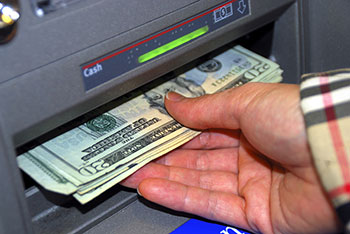If you're like most people, you've probably asked yourself, "How much cash should I keep in the bank?" There's no right or wrong answer, but there are general guidelines you can follow to maximize your savings and avoid wasting money. Everyone has a different savings formula. However, overcomplicating how you look at your own money can cause you to stress over every dollar spent. Read on to learn more about how you can structure your checking and savings accounts for success.

What to Keep in Your Checking Account
If possible, store at least one month's take-home pay in your checking account. This gives you a buffer without putting you at risk for living paycheck-to-paycheck or hoarding all of your extra money — only to overspend later. Saving the equivalent of your monthly take-home gives you peace of mind for 30 days should you paycheck get lost in the mail or another extenuating circumstance arises. Additionally, it reduces the worry of overdrawing your account or feeling unprepared to deal with emergency situations.
While it may seem like keeping a large cushion of funds is smarter, the truth is: mixing your checking and savings money can trick you into thinking you have more money available. If you keep a smaller but adequate amount in your checking, you'll be less likely to splurge on that new TV or designer jacket because the money's sitting in your account.
What to Keep in Your Savings Account
When it comes to long-term savings, it's generally a good idea to open high-yield savings account that's separate from your checking account. You can even open your savings account with a different bank. Funnel any additional funds into your savings account, and, if you want extra security, keep a small portion of it connected to your main checking account so you can do an instant transfer if necessary. For the rest of your savings, it's best to set them apart from your monthly expenses. And if you have to wait a few days for the money to transfer into your main account, you'll be less likely to waste it.